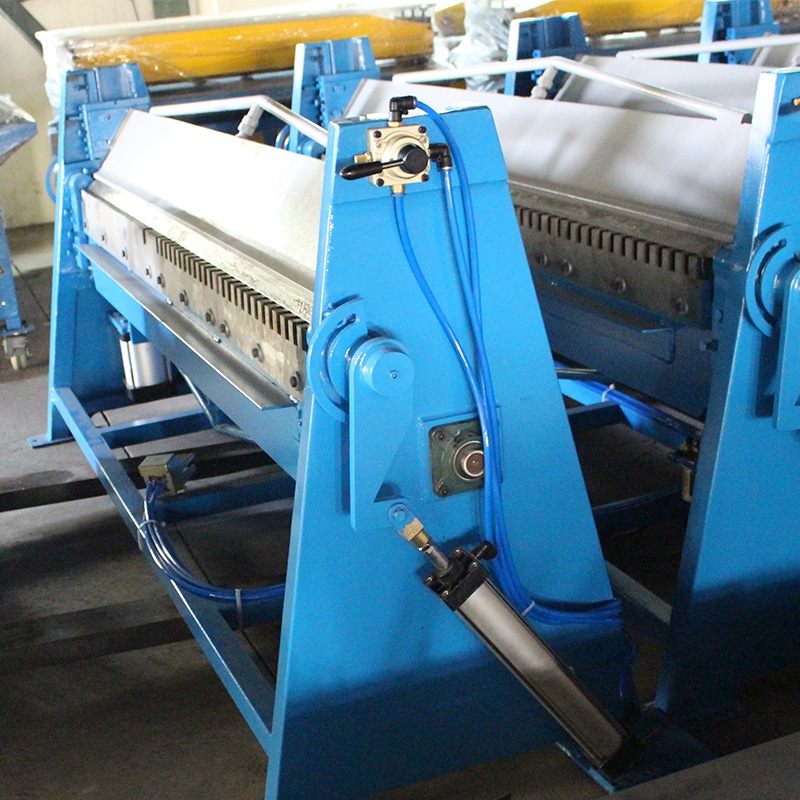
First, briefly summarize the main characteristics of the two:
CNC bending machine: the upper and lower dies are respectively fixed on the upper and lower worktables of the bending machine, and the relative movement of the hydraulic driving worktable is combined with the shape of the upper and lower dies to realize the bending forming of the plate.
NC flanging machine: the motor drives the upper slider to compress the plate, and the flanging beam rotates from bottom to top, so as to drive the plate to bend and form.
In terms of sheet metal forming, NC bending machine and NC flanging machine are compared from the following six aspects:
(1) different forming principles
Bending machine - the bending angle is controlled by controlling the pressing amount of the upper tool and the lower tool. During bending, the operator needs to hold up most of the external materials, and during bending of large workpieces, two or more employees need to cooperate.
Folding machine - after the plate is placed flat on the workbench, the blank holder beam is pressed down to fix the plate, and the folding beam is turned up and down to realize folding. In all folding processes of one edge, manual participation in positioning and auxiliary turning and positioning is no longer required.
(2) different bending accuracy
Bending machine - the controlled dimensional accuracy is the dimensional accuracy of the short side of the rear stop positioning. After bending, the final error accumulates to the inner space size. At the same time, the bending angle is controlled by controlling the pressing amount of the upper tool die, so this angle is related to the material thickness.
Flanging machine - the dimensional accuracy controlled is that after the first flanging is completed, the first edge is used as the positioning benchmark, and the final controlled size is the inner space size required by the customer. At the same time, the bending angle is the flanging angle directly controlled, which has nothing to do with the material thickness.
(3) material surface scratch and damage
Bending machine - during operation, the material will produce relative movement in the lower die, leaving indentation without surface protection. When bending large workpieces, they need to be turned over and moved many times, and scratches will inevitably occur in the process.
Flanging machine - when working, the blank holder beam tool and the flanging beam tool have no relative movement with the material, so as to completely avoid surface damage. When bending a large workpiece, because the plate is processed horizontally, all processing on one side of the workpiece can be completed at one time, so as to completely avoid surface damage.
(4) the requirements of workers' technical level are different
Bending machine - the technical level of bending workers is relatively higher.
Folding machine - programming can be realized intuitively by drawing with fingers, or engineers can realize offline programming by software, and import and add engineering sequence by USB or network connection. After programming, the main work of workers becomes simple loading and unloading without skilled bending workers.
(5) tool configuration
Bending machine - products with different thicknesses and shapes need different upper and lower molds. When meeting some special bending (such as circular arc) requirements, it is necessary to replace the tool or transfer it to another machine tool to increase the transfer and temporary storage of semi-finished products.
Flanging machine - by configuring a rotatable blank holder beam and installing two sets of blank holder beam tools at the same time, all bending processes can be completed in a single station. For arc bending or other special bending requirements, there is basically no need to replace the tools, which can be fully realized only by modifying the program.
(6) tool life
Bending machine - due to the relative movement of the workpiece in the tool die, the tool will be worn and need to be maintained or replaced.
Flanging machine - it basically avoids the relative movement between the material and the tool, and the tool has almost no wear for long-term use, greatly prolonging the tool life.
(7) drive system
Bending machine - hydraulic drive is adopted, which brings more maintenance work and is easy to be affected by environmental factors.
Flanging machine - adopts all electric drive design, which reduces maintenance workload and is independent of the use environment, so as to achieve higher bending accuracy.
(8) disadvantages of folding machine
1) Due to different bending principles, the R angle of the flanging machine is larger than that of the bending machine;
2) Restricted by the support table, the workpieces turned down on both sides cannot be processed;
3) The size of the workpiece is limited by the pressing area of the upper die, and the workpiece smaller than the size of the pressing area cannot be processed;
4) The efficiency is not as high as that of the bending machine;
5) Due to the structural characteristics of the bending machine and the diversity of molds, some complex shapes can be simply realized by the bending machine. Relatively speaking, the flexibility of folding is poor;
6) Folding machines are widely used in Europe and America. Influenced by the traditional Japanese processing concept, we generally use bending processing, and there is no better use of folding machines.
LINK:CT8 PRESS BRAKE / E21 PRESS BRAKE / HYDRAULIC SHEARING MACHINE / ELECTRIC SHEARING MACHINE
Site map technical support:whtime.net 